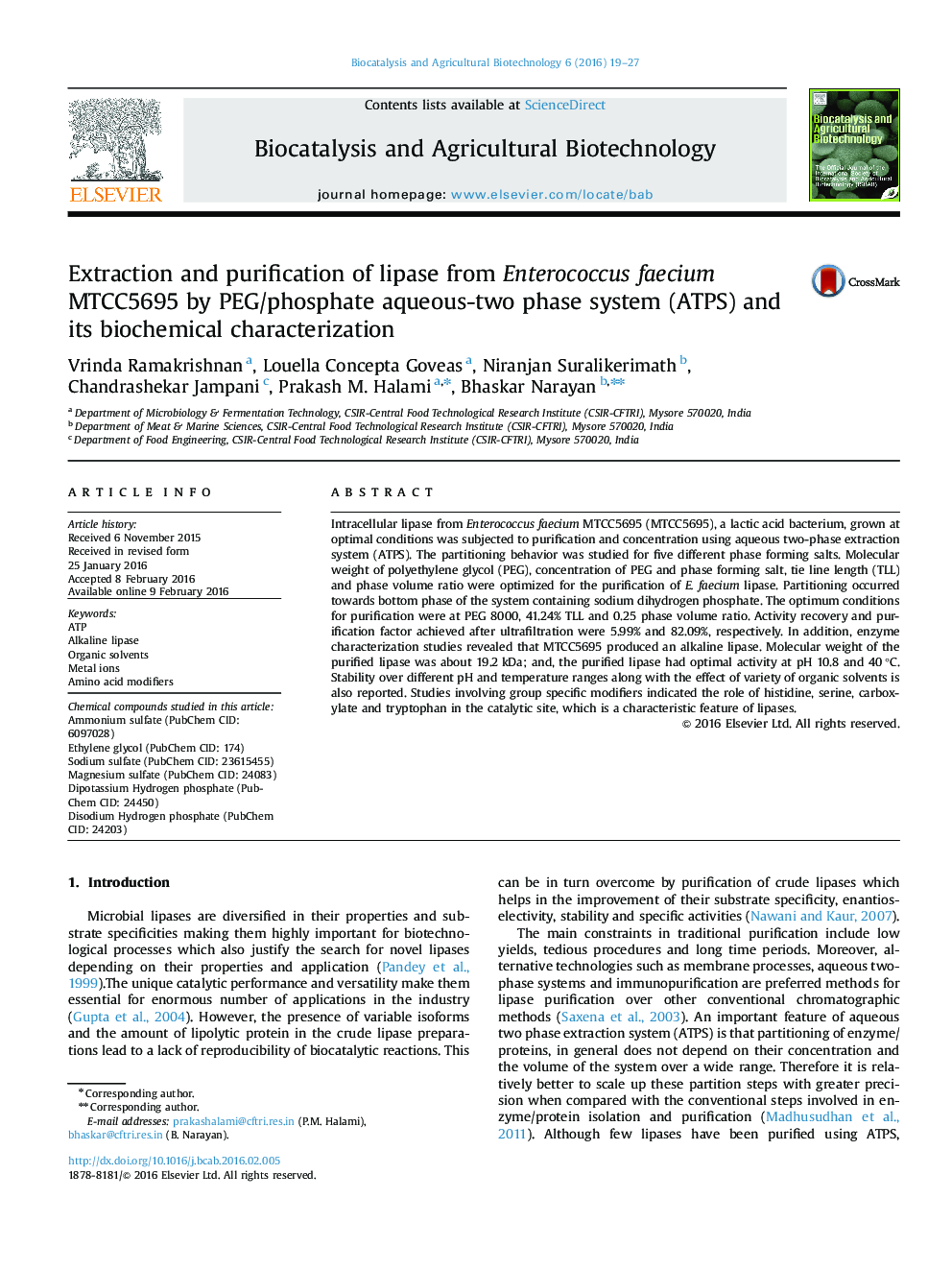| Article ID | Journal | Published Year | Pages | File Type |
|---|---|---|---|---|
| 2075386 | Biocatalysis and Agricultural Biotechnology | 2016 | 9 Pages |
Intracellular lipase from Enterococcus faecium MTCC5695 (MTCC5695), a lactic acid bacterium, grown at optimal conditions was subjected to purification and concentration using aqueous two-phase extraction system (ATPS). The partitioning behavior was studied for five different phase forming salts. Molecular weight of polyethylene glycol (PEG), concentration of PEG and phase forming salt, tie line length (TLL) and phase volume ratio were optimized for the purification of E. faecium lipase. Partitioning occurred towards bottom phase of the system containing sodium dihydrogen phosphate. The optimum conditions for purification were at PEG 8000, 41.24% TLL and 0.25 phase volume ratio. Activity recovery and purification factor achieved after ultrafiltration were 5.99% and 82.09%, respectively. In addition, enzyme characterization studies revealed that MTCC5695 produced an alkaline lipase. Molecular weight of the purified lipase was about 19.2 kDa; and, the purified lipase had optimal activity at pH 10.8 and 40 °C. Stability over different pH and temperature ranges along with the effect of variety of organic solvents is also reported. Studies involving group specific modifiers indicated the role of histidine, serine, carboxylate and tryptophan in the catalytic site, which is a characteristic feature of lipases.
